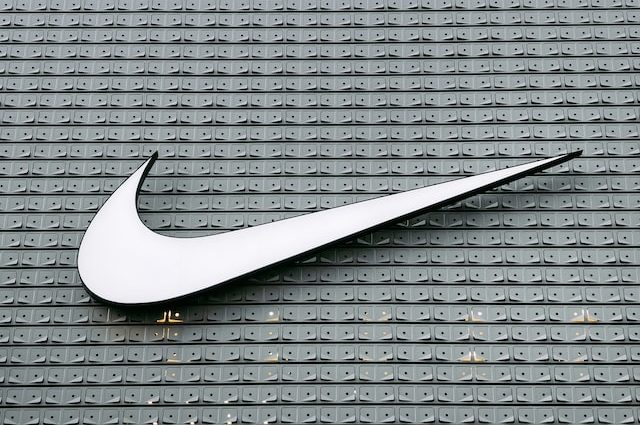Before we get into the specifics of Nike, let’s understand competitor analysis. Competitor analysis is a strategic research method companies use to identify, evaluate, and understand their current and potential competitors within the market. It’s an essential business strategy component and instrumental in understanding the industry landscape.
The process usually involves the following steps:
- Identifying Key Competitors: The first step is to identify who your competitors are. These may be direct competitors (those who offer the same or similar products or services as you) or indirect competitors (those who provide different products or services but compete for the same consumer dollar).
- Analyzing Competitors’ Strategies and Objectives: Once competitors are identified, the next step is to understand their business strategies and objectives. This may involve analyzing their marketing materials, financial performance, customer reviews, or any public information available about the company.
- Assessing Competitors’ Strengths and Weaknesses: This step involves evaluating the identified competitors’ strengths and weaknesses. Strengths include unique products or services, strong brand recognition, and superior customer service. Weaknesses include poor product quality, weak customer service, or high prices.
- Understanding Competitors’ Products/Services: Understanding what your competitors offer and how your products or services compare is important. This could involve looking at features, quality, pricing, customer service, and marketing strategies.
- Observing Competitors’ Reaction Patterns: Some companies react more aggressively than others when faced with competition. Understanding these patterns lets you predict how these companies might respond to your business strategies.
- Drawing Conclusions and Formulating Strategy: The final step is to take all the information gathered from the analysis, draw meaningful conclusions, and use those to formulate or adjust your business strategies.
The main goal of a competitor analysis is to understand the competitive landscape, spot opportunities and threats, and position your company most advantageously. It helps to inform strategic decisions, from product development to marketing and sales efforts. Now, let’s do a competitor analysis of Nike.
Here is the competitor analysis of Nike
Conducting a competitor analysis for Nike involves examining the major sportswear and athletic gear market companies that offer similar products or services. Here’s how you might analyze Nike’s key competitors:
Adidas
- Product Offerings and Innovation:
- Nike: Known for its innovative and diverse product range, including high-performance sports gear, athletic apparel, and lifestyle products. Nike invests heavily in technology and design innovation, which is evident in products like Nike Air and Flyknit shoes.
- Adidas: Also offers a wide range of products, focusing on performance and lifestyle. Adidas is renowned for innovations such as the Boost technology in footwear and its commitment to sustainability, exemplified by the Parley shoes made from recycled ocean plastic.
- Brand and Marketing:
- Nike: Emphasizes its brand as a symbol of excellence, innovation, and motivation, often encapsulated in its famous slogan, “Just Do It.” Nike’s marketing campaigns are known for featuring top athletes and inspirational storytelling.
- Adidas: Focuses on blending sports with culture, often collaborating with celebrities and designers. Adidas positions itself as a performance brand and a fashion icon, with campaigns often highlighting creativity and inclusivity.
- Target Markets and Segmentation:
- Nike: Targets a broad market segment, including professional athletes, sports enthusiasts, and people seeking fashionable sportswear. It has a strong presence in basketball, football (soccer), running, and, recently, lifestyle segments.
- Adidas: Also targets a wide range of consumers, with a significant emphasis on soccer globally. Adidas has made significant inroads into lifestyle and fashion segments, partly through its Originals brand.
- Global Reach and Market Presence:
- Nike: Has a vast global presence, with a substantial market share in North America and expanding influence in international markets, including Europe and Asia.
- Adidas: Originally based in Germany, Adidas has a strong foothold in European markets and is also a global player with a significant presence in various regions.
- Sponsorships and Partnerships:
- Nike: Known for high-profile sponsorships with top athletes, sports teams, and leagues. Its partnerships are often long-term and focused on brand-building in critical sports.
- Adidas: Also invests heavily in sponsorships, particularly in soccer, where it sponsors major teams and global events like the FIFA World Cup.
- Retail and Distribution Channels:
- Nike: Utilizes a mix of retail channels, including flagship stores, online sales, and partnerships with retailers. Nike has also been focusing on direct-to-consumer (DTC) channels recently.
- Adidas: Similar to Nike, Adidas uses a combination of brand stores, online platforms, and retail partners. It also emphasizes DTC channels and has a strong presence in e-commerce.
- Sustainability and Corporate Social Responsibility:
- Nike: Has initiatives focused on reducing environmental impact and promoting social responsibility in manufacturing and supply chains.
- Adidas: Highly focused on sustainability, committed to reducing plastic waste and using sustainable materials.
Reebok
- Brand Positioning and Image:
- Nike: Positioned as a premium brand, Nike is known for its innovation, quality, and the endorsement of top athletes. It appeals to a wide range of consumers, from professional athletes to fashion-conscious individuals.
- Reebok: Traditionally known for its classic and retro styles, Reebok has also positioned itself firmly in the fitness and CrossFit communities. It focuses on comfort, affordability, and lifestyle-oriented designs.
- Product Range and Innovation:
- Nike: Offers a diverse product portfolio, including high-performance sports gear, athletic apparel, and lifestyle products. Nike invests heavily in research and development, leading to innovative products like Air Max, Flyknit, and Dri-FIT technology.
- Reebok: Known for its fitness and lifestyle-oriented products. Reebok has made significant strides in the CrossFit and training sectors and is recognized for its classic sneaker lines like the Reebok Classic and Club C.
- Marketing and Sponsorships:
- Nike: Utilizes high-profile marketing campaigns featuring renowned athletes and celebrities. It emphasizes motivational and inspirational messaging, epitomized by its “Just Do It” slogan.
- Reebok: Focuses on fitness and lifestyle in its marketing. Reebok has made notable partnerships in the fitness world, including an exclusive deal with CrossFit and a focus on promoting fitness and wellness through various campaigns.
- Target Markets and Segmentation:
- Nike: Aims at a broad market, targeting both performance athletes and casual consumers interested in sportswear for fashion. It has a strong presence in numerous sports, including basketball, football (soccer), running, and golf.
- Reebok: Targets fitness enthusiasts, particularly in the CrossFit, training, and aerobic segments. It also appeals to consumers who favor retro and classic sneaker styles.
- Global Reach and Distribution:
- Nike: Has a vast global presence with a significant market share in North America and strong positions in Europe, Asia, and other regions. Nike sells through various channels, including its stores, online platforms, and third-party retailers.
- Reebok: Also has a global presence, but with a stronger focus on certain markets like North America and Europe. Reebok utilizes a mix of brand stores, online sales, and retail partnerships for distribution.
- Sustainability and Corporate Social Responsibility:
- Nike: Engages in various sustainability initiatives, focusing on reducing environmental impact through innovative manufacturing processes and sustainable materials.
- Reebok: Has also committed to sustainability, with initiatives like using eco-friendly materials and aiming for reduced plastic use in their products.
Puma
- Product Innovation and Range:
- Nike: Known for its wide range of innovative products, including high-performance sports gear, athletic apparel, and lifestyle shoes. Nike is renowned for technology-driven designs, such as Nike Air, Flyknit shoes, and Dri-FIT fabrics.
- Puma: Also offers a diverse product lineup, focusing on combining athletic performance with fashion. Puma is recognized for its stylish designs and collaborations with fashion designers and celebrities.
- Brand Image and Marketing:
- Nike: Positioned as a premium brand, Nike’s marketing emphasizes excellence, innovation, and motivation, captured in its iconic “Just Do It” slogan. The brand is highly associated with top-tier athletes and sports teams globally.
- Puma: Focuses on blending sports with lifestyle and fashion. Puma’s marketing often involves collaborations with fashion icons and emphasizes style and cultural trends, appealing to a younger, fashion-conscious demographic.
- Target Audience and Market Segmentation:
- Nike: Targets a broad audience, including professional and amateur athletes, sports enthusiasts, and individuals seeking stylish sportswear. It has a strong presence in various sports, notably basketball, football (soccer), running, and golf.
- Puma: While also targeting athletes, Puma places a greater emphasis on the fashion and lifestyle segment. It has made significant inroads in football (soccer), motorsports, and running and is increasingly appealing to consumers interested in sporty fashion.
- Global Reach and Sponsorships:
- Nike: Boasts a vast global presence and is a market leader, especially in North America. Nike’s sponsorships include high-profile athletes, sports teams, and major sporting events.
- Puma: Also enjoys global recognition, with a powerful presence in Europe. Puma’s sponsorships include notable football teams, athletes in various sports, and involvement in motorsports.
- Retail and Distribution Strategy:
- Nike: Employs a comprehensive retail strategy that includes flagship stores, online platforms, and partnerships with major retailers. Through its digital channels and branded stores, Nike has focused on direct-to-consumer (DTC) sales.
- Puma: Utilizes a mix of retail approaches, including brand stores, online sales, and third-party retailers. Puma has been expanding its retail footprint and enhancing its online presence.
- Sustainability and Social Responsibility:
- Nike: Engages in various sustainability initiatives, focusing on reducing its environmental impact and promoting sustainable manufacturing practices.
- Puma: Committed to environmental responsibility, Puma implements eco-friendly practices in product manufacturing and aims to reduce carbon emissions and water usage.
Under Armour
- Product Innovation and Range:
- Nike: Known for its extensive and diverse range of products, including athletic footwear, apparel, and equipment. Nike’s innovation is highlighted in its advanced shoe technologies (like Air Max and React foam) and performance fabrics (such as Dri-FIT).
- Under Armour: Initially gained fame for its moisture-wicking performance apparel and has since expanded into a wide range of sports gear, including shoes and accessories. Under Armour focuses on technology-driven performance gear, like HeatGear and ColdGear.
- Brand Positioning and Marketing:
- Nike: Has a strong brand identity associated with excellence, innovation, and inspiration, captured in its famous “Just Do It” slogan. Nike’s marketing is known for featuring top athletes and motivational messaging.
- Under Armour: Positions itself as a brand for the underdog, emphasizing grit, determination, and performance. Its marketing often focuses on hard work and perseverance, resonating with ambitious athletes and fitness enthusiasts.
- Target Market and Segmentation:
- Nike: Appeals to a broad market, including professional athletes, sports enthusiasts, and casual consumers interested in athletic fashion. It has a strong presence in numerous sports, including basketball, football, running, and golf.
- Under Armour: Focuses on performance athletes and serious fitness enthusiasts. It has gained popularity in American football, baseball, and gym training, expanding its appeal in global sports markets.
- Global Reach and Sponsorships:
- Nike: Enjoys a massive global presence and is a dominant player, particularly in North America and Europe. Nike sponsors many high-profile athletes, sports teams, and international sporting events.
- Under Armour: While having a solid presence in the United States, it is expanding its global footprint. Under Armour has significantly invested in sponsorships, including high-profile athletes and collegiate teams.
- Retail and Distribution Channels:
- Nike: Utilizes a mix of retail channels, including its flagship stores, online platforms, and a global network of retailers. Nike has increasingly focused on direct-to-consumer sales through its digital platforms and retail stores.
- Under Armour: Also employs a combination of brand stores, online sales, and retail partnerships. Under Armour is working on expanding its retail presence and enhancing its digital sales platforms.
- Sustainability and Corporate Responsibility:
- Nike: Engages in various sustainability initiatives, focusing on reducing environmental impact through sustainable materials and manufacturing processes.
- Under Armour: Has also committed to sustainability, with initiatives aimed at reducing its environmental footprint and promoting responsible manufacturing practices.











